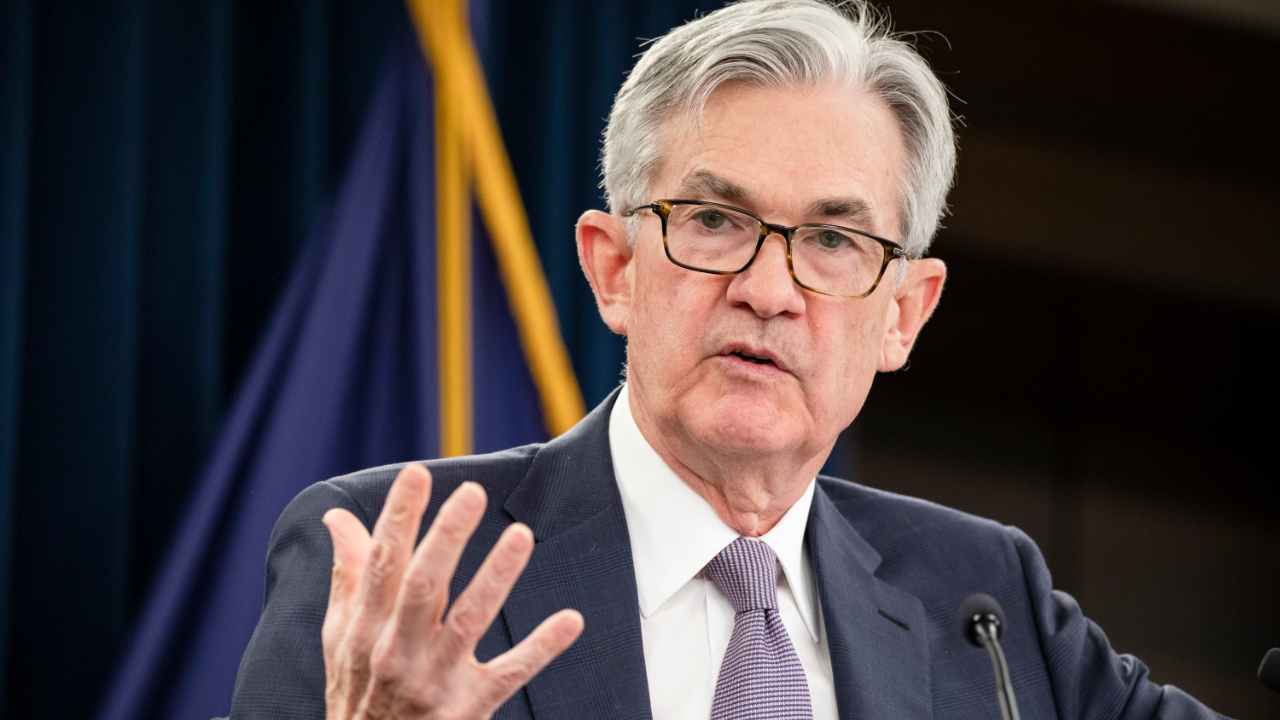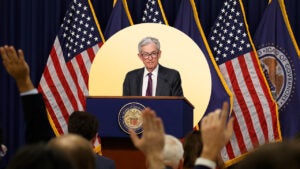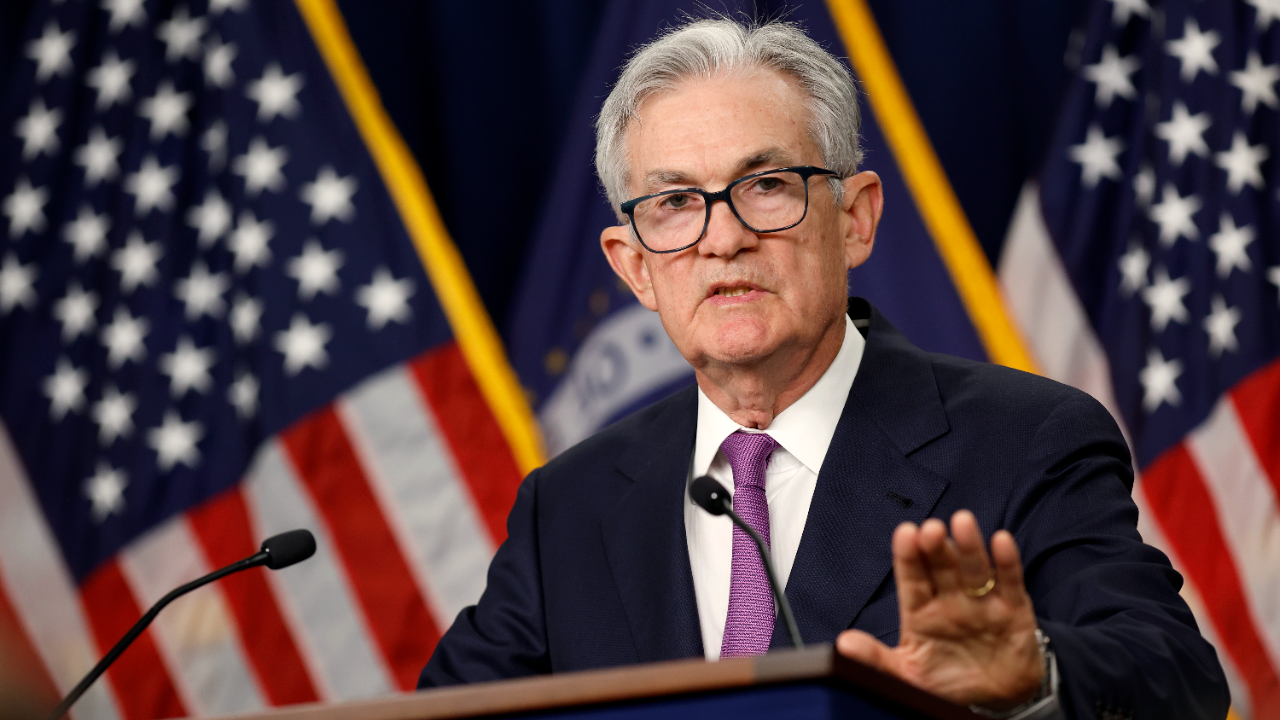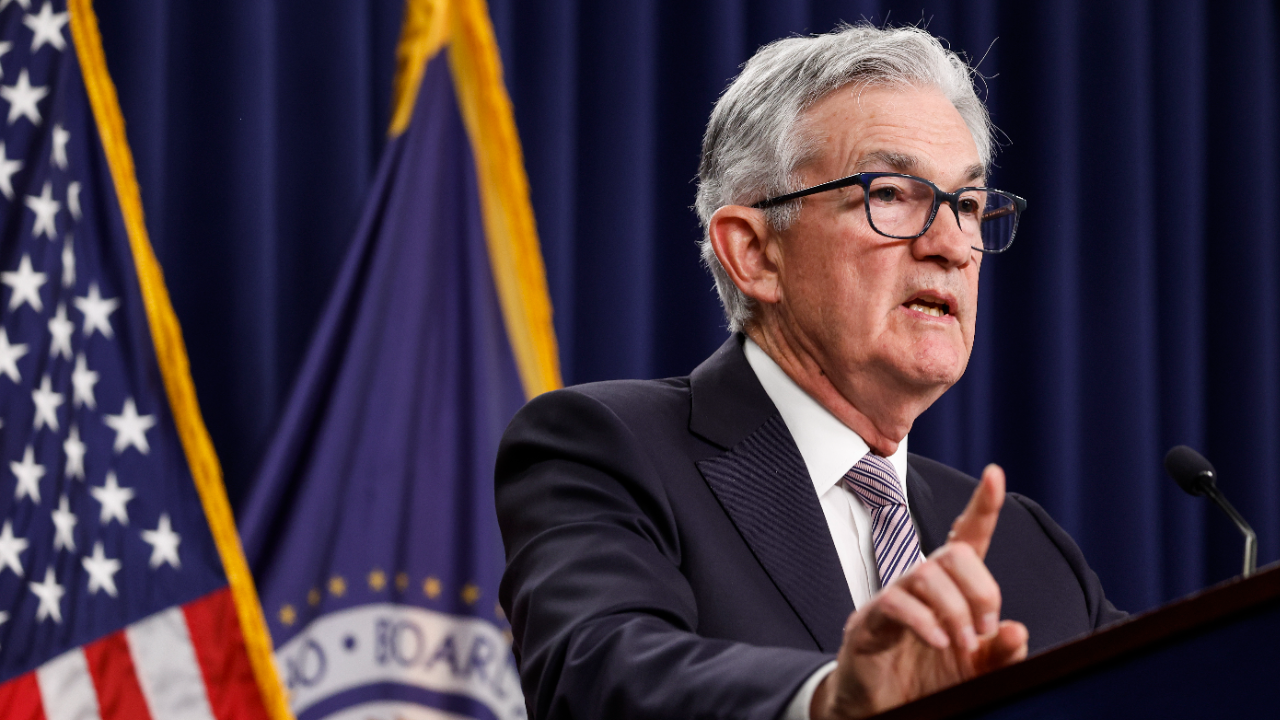Fed keeps rates near zero with bounce back from pandemic in sight

The Federal Reserve left interest rates near zero on Wednesday and pledged to keep aggressively supporting consumers and businesses past the pandemic, even as the U.S. economy shows signs of rapidly gaining speed thanks to vaccinations and nearly $3 trillion in fiscal stimulus so far this year.
Policymakers on the Federal Open Market Committee (FOMC) kept the Fed’s key borrowing rate in a target range of 0-0.25 percent, its lowest level in history and where it’s been since the COVID-19 outbreak first ripped a hole through the financial system nearly a year ago.
“Following a moderation in the pace of the recovery, indicators of economic activity and employment have turned up recently, although the sectors most adversely affected by the pandemic remain weak,” officials wrote in their post-meeting statement.
Illustrating officials’ more upbeat economic expectations, the Fed is now expecting unemployment to reach its pre-pandemic low of 3.5 percent by 2023 and is forecasting a short-term pop in inflation this year to 2.4 percent. At the same time, the sentiment for rate hikes over the next two years is growing on the margins, though the majority of Fed officials do not expect to lift interest rates through at least 2023.
The move almost certainly guarantees that borrowing costs will remain at historic lows, given that popular loan products from credit cards to auto loans are directly pegged to the federal funds rate. Meanwhile, consumers looking for a decent yield on the cash that they’ve stashed away will want to continue shopping around for the best deal.
Mortgage rates are also bound to keep holding near their historically low levels, after Fed officials also reaffirmed on Wednesday a commitment to keep buying bonds at its current $120 billion monthly pace. But they’re facing upward pressure as the 10-year Treasury yield — the main lever for the 30-year fixed rate mortgage — soars to levels not observed since before the coronavirus pandemic. A Bankrate survey of national mortgage lenders found that some financial firms are slowly cranking up the cost of buying or refinancing a home.
The Fed’s decision underscores policymakers’ patient rate approach and willingness to let the economy run hot amid expectations fears among investors that the financial system could hit a dangerous boiling point. Investors are concerned about hitting a dangerous level of inflation, though officials have stressed that they see price pressures this year as being temporary in nature rather than sustained.
“If FOMC members increasingly see rates rising as soon as 2022, the inevitable question is when do they start tapering their bond purchases and how much advance notice will they provide,” says Greg McBride, CFA, Bankrate chief financial analyst. “The Fed’s release and economic projections will do nothing to arrest the rise in long-term bond yields.”
Economic picture looking rosier with Biden’s $1.9 trillion stimulus
The U.S. economy is still smaller than it was before the pandemic, but its current position was almost unthinkable nearly a year ago, after states coast-to-coast shut down to curb the contagion’s spread in a move that put nearly a quarter of the labor force on unemployment benefits.
That’s thanks to two major fiscal relief packages, both of which sent a combined $2,000 stimulus checks to eligible U.S. adults and their dependents. The first, a $900 billion supplemental package, came in the final days of former President Donald Trump’s administration. President Joe Biden signed the second, a massive $1.9 trillion bill, into law on March 11.
“Fiscal policy overall will have really helped us to avoid much of the scarring that we were very, very concerned about at the beginning,” said Federal Reserve Chairman Jerome Powell during a press conference with reporters. “That’s just the size and the speed with which Congress has delivered with the CARES Act and since then.”
Economists outside of the Fed are already upgrading their economic forecasts as a result, with the Organization for Economic Cooperation and Development forecasting that economic growth will rebound twice as fast as originally expected.
Fed officials echoed those upbeat expectations in an update of their economic projections for employment, growth and inflation for the first time since December. Officials now see the U.S. economy growing at 6.5 percent in 2021, up from 4.2 percent, with joblessness falling to 4.5 percent in 2021, up from 5 percent. By 2023, unemployment is forecasted to reach its pre-pandemic level of 3.5 percent.
Meanwhile, price pressures are forecasted to moderate from their rapid 2.4 percent pace in 2021, down to 2 percent in 2022 and 2.1 percent in 2023. That’s considerably higher than forecasts from December, when officials didn’t see inflation rising to 2 percent at all over the three-year period.
Those outcomes are all despite most officials seeing interest rates holding at rock-bottom levels through 2023. Just four out of 18 policymakers project at least one rate hike in 2022, while seven saw at least one increase in 2023.
“It’s almost kind of the best of both worlds,” says Ryan Detrick, chief market strategist at LPL Financial. “They’re looking at some substantial growth in the economy in 2021, but at the same time, they didn’t remove the punch bowl. Low interest rates are likely here to stay through 2023 during a good economy, and the Fed is still pedal to the metal.”
Even now, officials don’t see those gains as being economically threatening. The Fed has a new policy where it would like inflation to average about 2 percent over time to make up for periods where price gains remained below the Fed’s target.
“Talking about inflation is one thing; actually having inflation run above 2 percent is the real thing,” Powell said. “The fundamental change in our framework is we’re not going to act preemptively based on forecasts, for the most part. We’re going to wait to see actual data.”
“Officials have gotten so much more optimistic about the outcome for economic growth and unemployment,” says Odeta Kushi, deputy chief economist for First American Financial Corporation. Yet, the Fed is still saying, “We’re not where we need to be. We’re not removing accommodation, and just because forecasts are brighter, it does not mean a change in policy from the Fed’s perspective.”
A separate gross domestic product (GDP) tracker out of the regional Fed bank in Atlanta shows the economy growing at 5.7 percent in the first quarter of 2021, bringing the U.S. economy close to its pre-pandemic size.
A reflection of that point of view, U.S. Treasury yields have soared in 2021, as expectations for a better-than-expected economic rebound come into view as Congress goes big on fiscal stimulus and the Fed persists with easy money policies over the next several years. Before the Fed’s Wednesday announcement, the yield hit 1.69 percent in intraday trading. Almost a year ago, that interest rate sank to a historic low of 0.36 percent in August.
Markets and Fed officials have been having a staring contest over rising yields, with bond investors hoping the Fed might blink first by announcing new asset-buying plans that could help push yields back down again. So far, however, Powell has refused, acting unconcerned about the recent pick up in a public address just weeks before the Fed’s March announcement.
“Just because you have a lot of fiscal and monetary stimulus, it doesn’t mean you have to have massive runaway inflation like a lot of people are worried about,” Detrick says. “The Amazon effect, globalization, automatization, technology — all of those things are still in play, and it will probably suggest inflation could stay relatively tame.”
Rising rates could still reach a point where they become counterproductive to the Fed’s goals, cooling housing market activity and business investment, though when that could happen is difficult to pinpoint, Kushi says.
“The purchase market should continue to be robust, but of course, the refi market is much more sensitive to even modest increases,” she says.
What this means for you
Nearly 10 million Americans are jobless right now, double pre-pandemic levels. If you’re one of these Americans who lost employment during the coronavirus pandemic, you’ll likely cheer the Fed’s patience. That’s because accommodative monetary policy gives firms a bigger incentive to borrow and invest, meaning your prospects of finding a new position will be stronger once the economy sustainably rebounds from the pandemic.
The U.S. labor market, however, still has a long way to go, with slightly more than half of all positions lost during the worst of the outbreak in March and April recovered. Firms might be hesitant to bring back more workers with spending subdued and uncertain at large, meaning you should keep ramping up contributions to your emergency savings and cutting back on expenses to conserve your money — whether you’re unemployed or not.
Experts typically recommend that consumers funnel up to six months’ worth of expenses into a liquid and accessible account.
“It’s just a lot of people who need to get back to work, and it’s not going to happen overnight,” Powell said.
While yields for certificates of deposit (CDs) and savings accounts have come down dramatically since the start of the coronavirus crisis in March, consumers can still find options on the market that are higher than that of a traditional brick-and-mortar bank.
Consumers looking to tackle their debt, particularly high-cost credit card balances, will also find that the wind is still in their sails, with rates remaining low into the future. Others looking to buy a home, car or another durable good will benefit from shopping around for the most competitive rates, especially if you’re debating whether it’s time to refinance.
“Even with the recent rise in rates, mortgage rates are still lower than anything seen prior to last summer,” McBride says. “Homeowners can take advantage by refinancing a mortgage, reducing the monthly payment, and saving tens of thousands of dollars over the life of the loan.”
Despite the 10-year Treasury yield rising above 1.6 percent, nearly double where it was back in November, would-be refinancers and homebuyers won’t be too late in the game — though mortgage experts say now is not the time to wait.
With stimulus checks already hitting many consumers’ bank accounts, consider allocating that money to where your finances will need it most, whether that’s your emergency fund, outstanding debt balance or investing goals. With the economy reopening, fighting the urge to overspend will be all the more important, now that the activities seemingly off limits nearly a year ago appear within reach.
“Between stimulus payments and tax refunds, many households will be receiving at least one or possibly two notable windfalls in the coming weeks,” McBride says. “The first order of business for most households will be to shore up emergency savings as just 39 percent of Americans could cover an unplanned $1,000 expense from savings.”
Learn more:
- Winners and losers from the Fed’s latest decision
- 3 ways savers can handle falling interest rates
- Here’s what to do if you’re still jobless by the time your coronavirus unemployment benefits run out






